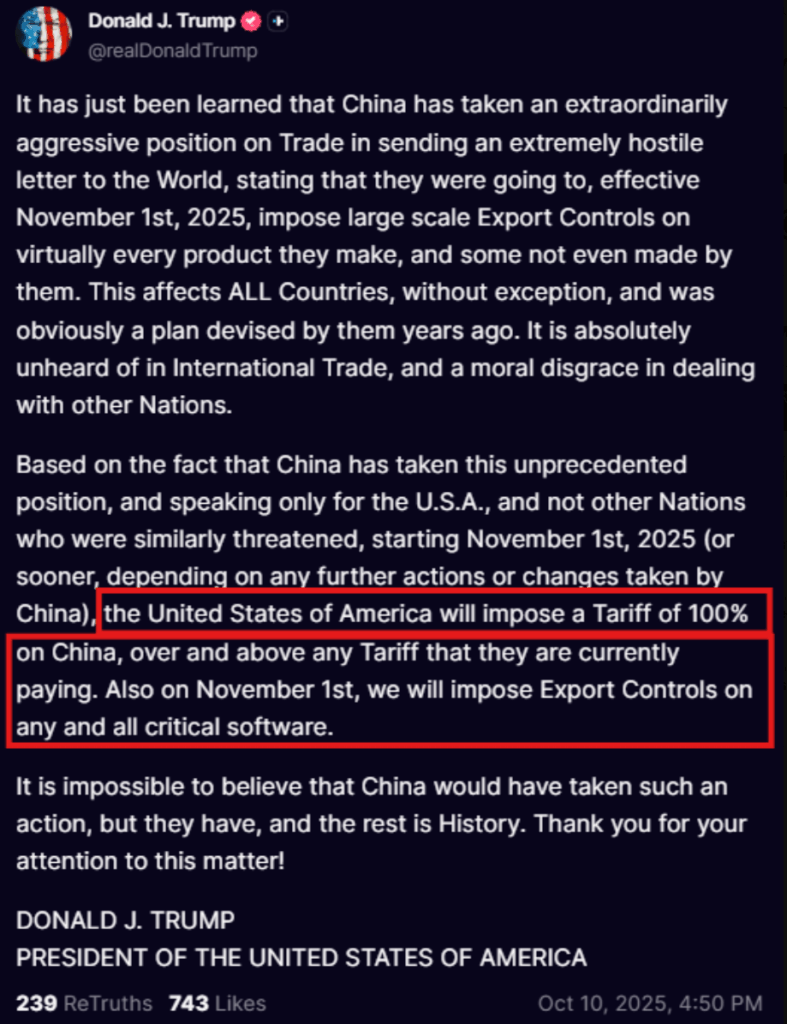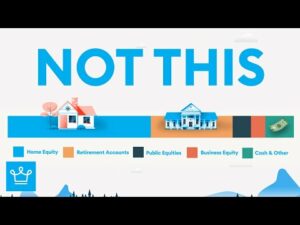August 2025 Housing Shakeup: Why Falling Rates Could Ignite the Biggest Price Correction You Didn’t See Coming!
Mortgage rates have just hit their lowest point in 2025, but don’t let that fool you into thinking the housing market’s on a smooth ride. Nearly half the country is feeling the pinch as corrections take hold, sellers grow weary, and new listings stall out. So, what’s really going on here—is it just a garden-variety market correction or the ominous whisper of a housing market crash? More importantly, with mortgage rates dipping and sellers hesitating, is NOW the time to jump in, or should you brace for a deeper dive? Let’s unpack the complex dance between falling interest rates, shifting economic signals, and the buyers’ market that’s reshaping real estate as we know it. This August 2025 housing market update isn’t just another report; it’s your roadmap through uncertainty and opportunity alike. Ready to get the edge? LEARN MORE
Mortgage rates just hit their lowest point in 2025. The housing market correction spreads to nearly 50% of the country. Sellers are giving up as new listings begin to retreat. Is this just a normal correction or the signs of a housing market crash? Should you take the chance and buy now with lower rates and desperate sellers, or could this just be the start of a downward spiral? We’re giving the data on it all in this August 2025 housing market update!
Interest rates got some serious relief at the start of the month. We’re now around 0.5% lower than we were at the beginning of the year, bringing some much-needed affordability to the housing market. The cause? New and revised jobs reports are getting investors worried about the economy, and increasing our likelihood of a recession coming our way. But with less labor stability, will homeowners be forced to sell? And will we see foreclosures begin to rise?
Sellers are starting to realize what we all already know: it’s a buyer’s market. Would you sell your home when buyers have all the leverage? Probably not. And most sellers are feeling the same, choosing to hold onto their houses instead of putting them on the market. What’s the chance this locks up inventory yet again? Is this the tipping point for the housing market and a perfect window to buy? Dave’s giving his take today.
Click here to listen on Apple Podcasts.
Listen to the Podcast Here
Read the Transcript Here
Dave:
Mortgage rates have dropped to their lowest level of 2025. Meanwhile, 50% of markets are seeing price declines, but affordability is starting to increase. This could mean a buying opportunity or the start of a deeper correction. It’s a rapidly shifting housing market right now filled with opportunity but also uncertainty. So today I’m going to help you make sense of it all. This is our August, 2025 housing market update. Hey everyone. Welcome to the BiggerPockets podcast. I’m Dave Meyer, housing analyst investor strategist, and today I’m bringing you our monthly housing market update. And oh man, we really need it this month because there is so much going on from rising inventory to new delinquency and foreclosure data to new price forecasts. We got a lot to get into because all of this stuff really does impact your decision making as an investor from setting your strategy to building a buy box or deciding how you want to make an offer.
All of that depends on having knowledge of current market conditions. So let’s waste no more time and get into our housing market update. First up, we got to talk about mortgage rates, which have now dropped to our lowest level of 2025. As of this recording, mortgage rates are currently sitting for prime rate 30 or fixed rate mortgage around six and a half, 6.6%. Now, I’m sure that most people aren’t feeling this huge sense of relief seeing mortgage rates at six and a half or 6.6%. Probably most people were expecting or at least hoping for bigger rate relief by this time in 2025. But it is significant because if you remember back to January rates, were actually at 7.1, 7.2%. So we actually are more than half a percentage point down, which does mean hundreds of dollars per month on the average mortgage. So that is pretty good.
And then second of all, I’m not surprised by this, if you’ve been listening to the show, my mortgage rate forecasts have been that in 2025 mortgage rates were going to stay in the mid sixes. And so we’re getting at least what I was expecting. Now the last week or two has been encouraging because we saw kind of a big drop down from 6.75 to about 6.5. Again, nothing crazy, but it is moving in the direction I think most real estate investors want to see. And the reason that happened was mostly because of labor market data. And this is important because I think a lot of real estate investors, you look at the headline information, you maybe follow what the Fed is going to do. But last week the Fed actually declined to cut rates, but rates actually still went down. So I just kind of want to take a minute to explain why that happened.
Last week, a report came out like it always does, showing how many jobs were added to the economy. And for the month of July, it was 73,000 jobs, which is still up, right? That’s good. But it was less than the 104,000 that was expected. But actually the biggest news that spooked the economy was these downward revisions for job numbers for May and June when the BLS, the Bureau of Labor Statistics initially released their data for May, they said there was 144,000 jobs created. And then they revised it and said, actually, no, it was just 19,000. A huge difference. Sort of the same thing happened in June where they said 147,000 jobs were created. Then they revised it this month and actually said, Nope, it was 14,000. And a lot of people have a lot to say about these revisions. I just want to call out that these revisions have always happened.
They are very frustrating. And as an analyst, someone who wants to forecast things, I wish they were accurate all the time, but this is always how it’s worked. So why does this matter though? Why does these revisions and job numbers matter? Well, mortgage rates are dependent on the bond market and bond investors who are managing huge pools of money. These are like hedge funds, pension funds, sovereign wealth funds, these big people controlling billions or trillions of dollars when they start to get fearful about a recession, they take some of their money that they’re managing and they want to put it into somewhere safe, right? They want to find a safe place to put it. And that is often in US treasuries bonds that are issued by the US government. And when that happens, the demand for new bonds pushes down bond yields. That means the government doesn’t have to pay as much to borrow money, and that’s a good thing for the government.
And it’s also a good thing for real estate investors because that means that people who are taking out mortgages don’t need to pay as much to borrow money as well. So mortgage rates come down when there is this fear of recession and when there are bad job numbers or revisions to job data that indicate a recession could be coming, that typically pushes down mortgage rates. And that’s exactly what we saw. Generally investors saw this as a weak labor report while at the same time tensions about the economy are already generally pretty high. I think people have worries about how high interest rates are and how they’ve been high for a long time. People are fearful about the inflationary impacts of tariffs. I think a lot of people are fearful about AI and how that’s going to disrupt the labor market. And so all these things sort of combined to mildly, again, this isn’t crazy, but mildly increase the risk of recession that brought mortgage rates down.
So this is good news for anyone who wants to participate in the housing market in the short run, and I have been saying it to people for the last couple of days, but if you are looking to buy right now, could be a good time to lock in a mortgage rate because while it could be the start of a trend, and I think for most real estate investors, they would hope that this is the start of a downward trend. I personally wouldn’t plan on that, and I still do think that could happen, but I think a lot of people in this industry right now are underestimating the chance that mortgage rates stay high for the foreseeable future. I’m not saying forever, but for the rest of 2025, I think we’re going to see mortgage rates fluctuate a lot from somewhere around the mid sixes, maybe even up to seven.
But I would be very surprised if we saw anything under a six in 2025. And this is regardless honestly of what happens with the Fed. I know the Fed is in the news a lot right now about their decisions not to cut rates here in July. The money, people who bet on this kind of stuff do believe that there is going to be a rate cut this fall. I agree with that. I think we’ll see at least 1 25 basis point cut sometime this fall. But my prediction about mortgage rates staying somewhere in the sixes, probably in the mid or even higher sixes is sort of regardless of what the Fed does because as we’ve talked about on the show, and I just want to remind people, the Fed does not control mortgage rates. They control the federal funds rate, which influences short-term borrowing costs, not the type of long-term borrowing costs that you need for a mortgage.
It is one factor in mortgage rates, but they’re not directly correlated. We saw this last September, the fed cut rates twice last fall and mortgage rates shot up. They were around 6% last August, about a year ago, and they cut rates in September and then in November and by January rates were back up to 7.2%. And so I just want to call out that what you should be paying attention to if you want to know what’s going on with mortgage rates is yields on bonds, not what the Fed does. And again, just for actionable insights here for BiggerPockets community, if you are looking to buy, I wouldn’t be holding out and waiting for a lower rate if you want to buy in the next three to six months. I would jump on opportunities when we see these dips in mortgage rates like we’re seeing right now because they could be back at 6.7% in a week.
They could be at 6.9% in two months, we don’t know. And if you find deals that work with these rates and you just got a little bit of break, you just got a quarter point cut, I would jump on those kinds of things. If you have a great deal lined up, and you probably all know this, but I have always been a big detractor. I do not like the idea of date, the rate marry the house. And I just want to reemphasize this that even though I’m saying that if you have a good deal lined up and it works with these rates, that’s great, but I would not ever recommend anyone buy a deal assuming that mortgage rates are going to go down. If your deal does not work with the mortgage rate that you are going to buy it with, do not buy deal.
It is not worth it. Otherwise you are betting on something you have absolutely no control over. And as a real estate investor, that’s just an unnecessary risk. Just don’t buy something that only works if rates go down, find a deal that works with today’s rates, take advantage of these little dips, but be disciplined about what you buy. Last thing I want to say about this is I know that people want lower rates. I wish rates were lower too, but just want to also call out the fact that what we’ve seen here, the reason rates have come down in just the last couple of weeks is because people are generally more fearful about it recession than they were two weeks ago. And again, these are modest changes, but I just want to call that out. And the only way I think we see really significant declines in mortgage rates is if their economy really starts to falter.
And I’m not talking about these kinds of sort of weak labor data. I’m talking about big increases in unemployment rates, stuff that we haven’t really seen evidence of right now, but I just want to call out that there’s a trade off here. You might get lower mortgage rates in those instances, but you could have a much weaker economy. So I think it’s important to sort of temper your expectations and what you’re rooting for here because I think it’s going to be tough to get super low mortgage rates right now without economic hardship. And obviously we don’t want economic hardship. So I think a slower more modest decline in mortgage rates is the most likely scenario and is probably the most beneficial scenario to the economy as a whole. All right, so that’s the first major trend I want to make sure everyone is aware of that mortgage rates have dropped to their lowest rate of 2025. Next up, we got to talk about inventory and how that’s impacting price forecast across the entire country, but we got to take a quick break. We’ll be right back. This week’s bigger news is brought to you by the Fundrise Flagship Fund, invest in private market real estate with the Fundrise Flagship fund. Check out fundrise.com/pockets to learn more.
Welcome back to the BiggerPockets podcast. I’m Dave Meyer giving you our August, 2025 housing market update. Before the break, we talked about how mortgage rates have reached their lowest rates since 2025. Good news for our community here at BiggerPockets, but we have to cover the next major story, which is the fact that we are entering a buyer’s market. A lot of markets across the country are now in corrections. There is risk. I will give you my opinion in a little bit that the national housing market will turn negative by the end of the year. So we got to dive into what’s happening on the price and inventory front. And just so everyone knows, the reason we talk about inventory and pricing together is that they are so closely related when inventory goes up, relative demand prices tend to go down because there’s basically more properties for sale at a given point than there are buyers.
And the sellers have to compete for their buyers by lowering their prices. When there is lower inventory, relative demand prices tend to go up. So that’s why we talk about these things together. But let’s talk about the big picture here. Generally the big trend that you can see is that appreciation is slowing down everywhere. The markets that were in decline are seeing probably a little bit bigger declines. The markets that are growing might still be growing, but they’re just growing at a slower rate. And we’re seeing this in almost every market in the country. There are very, very few metro areas where we are seeing price growth accelerate. So that’s the really big picture. And getting back to my explanation earlier about inventory, the reason that this is happening is because there is more inventory we are seeing in the markets that are declining and even the ones that are growing, but just growing more slowly, that relative to the number of buyers, there’s just more and more homes for sale.
And again, this just creates competition for buyers, and that means some sellers are going to have to lower their prices. This pushes prices for that entire market down. Just to give you an idea of the scale of this, at least we’ll start on a national level. Active listings, which is a measure of inventory. Basically the number of homes that are for sale in any given week or month, according to Redfin, they’re up 9% year over year. And that is a pretty solid number. But again, I just want to call out, this is not sort of emergency numbers. Seeing inventory go up 9% year over year is not super surprising to me. That’s kind of what I think most people who follow this stuff have been expecting for the last couple of years is that eventually things were going to go back closer at least to pre pandemic levels, and that’s sort of what we’re approaching.
Now, of course, the supply question sort of has to be relative to demand, and I think this is the part that surprises a lot of people who are not obsessively watching the housing market like I am. But demand for housing is actually up year over year too. I know that’s surprising. You probably see this in the news or in social media where people are like, oh, there’s no buyers. No one wants to buy a home. That is not true. We actually see modestly higher by a few percentage points. Demand for homes as measured by the number of people applying for mortgages is actually up year over year. And this is why, this is one of the reasons we’ll talk about this more, but this is one of the reasons why although prices are correcting in a lot of markets why we’re not seeing this wholesale crash in the market, it’s because, yeah, more people are selling, but also people still want to buy.
They still want to get into the housing market. Demand is low compared to historical periods, but compared to the last few years, it’s actually not changed that much. And that’s why it’s the change in supply and demand dynamics that really matter. And we’re just not seeing that a change in demand right now. Now, if you want to understand which way this is going to go, I imagine most people listening to this are thinking, okay, prices right now, they’re up nationally about 2%, so that’s about the pace of inflation. They are down a little bit in inflation adjusted terms from their peak back in 2022 or so. That’s mostly kind of flat, nothing super crazy, but I would imagine everyone, myself included, want to know where prices are going to go in the future. Is this going to spread to even more markets? Are we going to see an accelerating correction that gets worse and worse and worse?
Or are we going to see sort of a normal market cycle where prices tend to go down a little bit, then they find a bottom, there’s some stimulus, maybe mortgage rates come down and then prices start to go up again and go through an expansion. That’s a normal market cycle. So which one is this? Is this a correction or is this the start of a full blown crash like a lot of very loud people have been calling for many years? Well, there are a couple of different data sets I wanted to share with you because I would imagine a lot of the headlines, a lot of other people who are talking about crashes and what’s going on in the market are not really looking at data. They’re probably subscribing to this. What goes up must come down theory. That is nonsense. That doesn’t make any sense.
What you actually have to do is look at the underlying fundamentals and trends in the market, and I’m going to share those with you right now. The first dataset we need to look at is something called new listings. Now, this sounds very similar to active listings or inventory, but there’s a crucial difference here. Active listings is the number of homes that are for sale at a given point in time, and because of that, it’s actually not just a reflection of how many people are listing their properties for sale, but also how quickly they are coming off the market. In order to understand just the number of properties that are hitting the market, we need to look at a different metric that is called new listings. And this is sort of a fascinating chart right now, but at least I find it fascinating. I’ll explain to you what it all means, but I think it’s really interesting.
For most of this year, 2025, what we’ve been seeing is that new listings was going up. So we were seeing five, seven, 10% increases year over year. That means more people were choosing to sell their home. But then something happened around May or June where actually people decided they didn’t want to sell their home. Instead of being up 10, nine, 8% year over year, we’re actually down to just 0.5% growth year over year. Basically, for all intents and purposes, it is now flat. We are seeing the same number of new listings going on the market as we did at this point last year. And this is super important because what so many people are screaming about a housing market crash are missing is they have this assumption that the second that inventory starts to climb, that it’s going to keep climbing forever and ever and ever.
And we’re going to see this unlimited number of new homes hit the market and there’s going to be no buyers and the market is going to crash. But what normally happens in a housing market correction in a normal business cycle, sellers, yeah, they’re getting uneasy. They start to sell their home, they need to sell their home for whatever, but at a certain point they might look around and see, Hey, we’re in a buyer’s market right now. I’m not getting the price that I want to get. I’m going to have to offer concessions. This isn’t going to go the way I want it to. So you know what? I am not going to sell my home right now. And clearly to me that is starting to happen because we are seeing this decline in year over year new listings. And I think when you start to look at the regional data, it tells a really compelling story.
I grabbed some data from Redfin that shows the regions that have the fastest home price growth and the slowest. So when you look at the fastest year over year increases, we see Cleveland right now 15% growth. That’s enormous. Montgomery County, Pennsylvania at 9%, Nassau County, New York at 9%, Detroit at seven, Indianapolis at 7% as well. Now if we look at the properties with the fastest growing new listings, we see Seattle, so not on the first list. Philadelphia not on the first list, but we see Montgomery County, Pennsylvania, and Cleveland followed by Minneapolis. So why would this happen? Why would new listings be up in the cities where things are going well? Well, because it’s going well for sellers. If you could sell your home in Nassau County at 9% more than you got last year, that’s a pretty good selling proposition. So if you were on the fence about selling your home, you’re probably going to do it because selling conditions are really good.
When you look over to the other side of the equation where metros are seeing the biggest declines, the list top five, Oakland, California, west Palm Beach, Jacksonville, Austin, and Houston. When we go to see where new listings are down, we see similar patterns here. It’s not the exact same, but we see Tampa, Portland, then we see Jacksonville, Orlando, Sacramento. So why would this happen? Well, in the markets where prices are decreasing, I think a lot of sellers who are on the fence about selling their home are choosing not to sell their home because they can’t get the price that they want, and if they are not forced to sell, they are choosing not to sell. And this is a really important dynamic going on the housing market right now. I am not saying that prices are not going to decline nationally. I think we’re in this for a little while.
I think we’re going to see more corrections, but if you want to understand the direction things are going and if there’s going to be a bottom soon, or if this is going to turn into a full-blown crash, the fact that new listings is starting to decline at the time you would expect them to start to decline indicates to me it’s at least one data point to me that shows that this is probably more of a normal market cycle, then a crash. Now of course, there are other things that go into whether or not a market is going to crash, and for that we need to look to another data set, which is delinquencies and foreclosures. This is one of those things that could really come in and mess up the entire housing market, but luckily we just got some new data about this, which I’m going to share with you right after this quick break.
Welcome back to the BiggerPockets podcast. I’m here with our August, 2025 housing market update. Before the break, I was talking about this really important data trend of new listings and how that’s coming back down to earth right now at the time that you would expect it to, because as I said, I think the key thing about new listings is that if prices start to fall like they are in a lot of markets, many sellers, if they are not forced to sell, are going to choose not to, and that will moderate inventory growth and prevent a full blown crash. That is what happens in a normal housing market cycle, but there’s a big if they’re not forced to sell. And so to really understand and to get the full picture here, we need to look at whether or not sellers are likely to be forced to sell their properties because just having prices go down does not mean they’re going to be forced to sell.
A lot of people ask me this question, if prices go down, can you get foreclosed on? No, that is not how it works. The only way you get foreclosed on is if you don’t pay your mortgage. For our purposes, when you look at the data, it shows that the credit quality for borrowers with mortgages is actually quite good right now. Now, there’s different ways to measure this, but I think one of the most telling things that this report has, it’s this chart if you’re watching on YouTube, but we’ll put it up, but if you’re listening on audio, I’ll just describe it to you. It’s a chart that shows the credit score of the average borrower in the United States, and what you can see is that the credit scores is really high, and it has been really high for at least, honestly, going back to 2009 when they really tightened things up after the crash.
The 50th percentile for the average borrower has been above seven 50 for the last 15 years, and actually in just the last couple of years, it’s been closer to seven seven. So we see really high average credit scores. Meanwhile, on the other side of the equation, the so-called subprime mortgages, you’ve probably heard about this sort of became infamous in the aftermath of the financial crisis, but these subprime mortgages, which had people borrowing with credit scores below six 50 or so, there were a lot of those in 2003 through 2007, but since 2009 and since 2010, those subprime mortgages have basically gone away. There are very, very few of them going on. That means if you fast forward to today, their average borrower for the last 15 years has been highly qualified to pay their mortgages. It means that right now they’re probably still paying their mortgages.
We see this in the credit scores, but we also see it in the foreclosure data. There’s again, a ton of different ways to look at foreclosure data, but all of them basically tell the same big picture story. It’s that foreclosures and delinquencies have moved up from their lows in the pandemic because to be honest, during the pandemic, they were artificially low. There were new programs that were put in place that basically made foreclosures impossible, and you might agree with that, you might disagree with that, but the data sort of got messed up one way or another. Data was not reliable for foreclosures for several years, but in the last year or so, or actually in the last six months or so, all of those foreclosure moratoriums and stuff have ended. And so what we saw for a lot of the last couple of years is that artificially low number of foreclosures starting to come back up to normal levels.
Just as an example, if you look at the transition rate, that’s basically how many people who were paying their mortgages transition into being delinquent on their mortgage in a given quarter. Pre pandemic, it was pretty stable at 1%. Basically from 2013 to 2020, it was like 1% almost exactly flat during the pandemic went down to about half a percent, but it’s climbed back up to 1%, which is what you would expect, right? Once all the special pandemic era laws were gone, you would expect it to go back to normal, which is what happened. But I think again, when you hear some people worried about the economy or the housing market, they say, oh, foreclosures are going up. Yeah, they did. You know what they did last quarter? They went down. They actually went down, and I double check this on a couple of different sources.
So this is not just the New York Fed. There are private sources like Adam Data or ICE Mortgage Monitor. What they’re showing is that yes, the foreclosures and delinquency rates went back up to pre pandemic levels and now they’re just chilling right there. And of course, that could change in the future if there’s massive unemployment, there is some black swan event. Of course those things could happen, but if you just want to understand what is actually happening and what we have evidence of happening right now, there is no risk of a foreclosure crisis anywhere in the near future. What we are seeing is that people generally speaking are paying their mortgages as expected, and this, again, is happening across the spectrum. So I was looking at transition rates for 30 to 60 days late. Those went down last quarter, transitions to 90 plus days late, so more seriously delinquent.
Those also went down last quarter, and so they’ve come back up, but they’re leveling off. Now, I want to get back to what that means for the housing market, but I did just want to mention because I find this stuff cool, and I thought this report was pretty interesting. When you look at delinquency rates for debt in general, it’s really sort of fascinating to see the delinquency rate for different types of debt. So for mortgage rates, when you look at this chart, again, I’ll put it up on YouTube, but when you look at the mortgage rates chart, delinquencies are super low. Again, they’re at about 1% and they’re flattening out. When you look at other types of debt, like for example, credit card debt, that has really gone up pretty significantly in the last couple of years. It was at about seven or 8%. Now it’s about 12 or 13%, but it might be flattening out.
When we look at auto debt for cars, that has gone up and has been consistently going up. When we look at this ominous category of just other debt, I don’t even know what that means, but that is going up a lot. I think this is stuff that’s not as directly tied to the housing market, but it is something that could impact the economy as a whole. So that’s something I will update you about when we get new data on that. But just back to the housing market and these delinquency rates, I kind of want to just bring this whole thing home because I said a little bit earlier in the show that as long as sellers are not forced to sell, they are likely to adapt to market conditions, and we’re not going to see this exponential increase in inventory that could potentially lead to a housing market crash.
Of course, things could change in the future. Again, we will update you every month on these kinds of things, but as of right now, I think things are still materializing the way where it looks like we’re going to see a correction. I personally have told you, I think we will see national prices turn negative by the end of the year. I don’t exactly know when there’s going to be a bottom, but my feeling is that the risk of a full-blown crash where we’re going to see national housing prices go down by more than 10%, I think the risk of that remains relatively low. And for investors, that means that it’s up to you, your own risk tolerance. But for me, the thing I take away from this is that there is going to be opportunity and risk. I keep saying this, but I think that’s the real sort of mindset that everyone needs to get into when we enter a buyer’s market.
Is there risk because prices are going down? Absolutely. You need to be careful. You need to be able to buy below current comps. You need to find great assets in really good neighborhoods. Those are the ones that are going to preserve their value, and that will start to grow again the fastest when things start to turn around. But don’t forget that this also means that there is opportunity. Housing prices are going to be lower, and that means you’re going to be able to buy great assets at lower prices than you’ve been able to in years. And of course, as an investor, it is your job to be able to identify properties that are going to do well in the next expansion era. But we’re going to be here on this show talking about that and helping you identify those great properties to buy during a buyer’s market for the foreseeable future. And so I hope you are all seeing this in a similar way that I am is yes, there’s risk, but we’re out here to try and spot opportunities, and those opportunities are going to come. That’s our housing market update for August, 2025. I’m Dave Meyer. Thanks for watching.
Watch the Episode Here
Help Us Out!
Help us reach new listeners on iTunes by leaving us a rating and review! It takes just 30 seconds and instructions can be found here. Thanks! We really appreciate it!
In This Episode We Cover:
- Mortgage rate updates: why they’re falling and whether this downward trend will continue
- Why we could be entering a nationwide housing correction as price declines deepen
- Foreclosure and delinquency updates: will homeowners be forced to sell soon?
- The growing buyer’s market and why would-be sellers have decided to wait it out
- Is now the perfect time to invest with low rates and high buyer power?
- And So Much More
Links from the Show
Interested in learning more about today’s sponsors or becoming a BiggerPockets partner yourself? Email [email protected].

















Post Comment